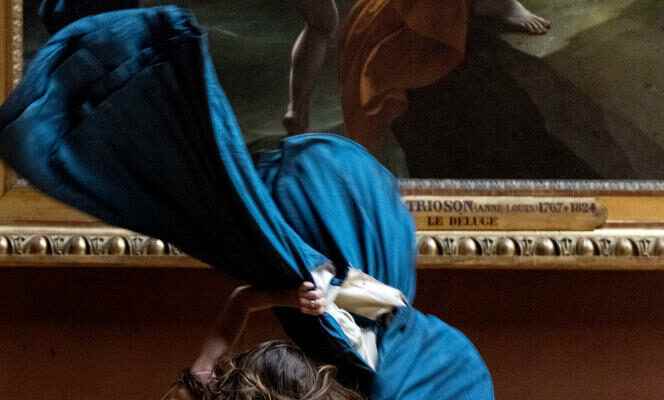Dancing the Louvre. Embody Veronese, Vinci, Titian or Géricault. Weave stories painted centuries ago with the nervous threads of today’s choreography.
Presented by the Fall Festival, Forest, designed by Anne Teresa De Keersmaeker and Némo Flouret, unfolds an ambulatory performance whose title contains the seeds of a dense canopy of gestures. And for good reason. The route invests 5,000 square meters of the famous Denon wing, notably that of the Italian masterpieces of the Renaissance, including Mona Lisa at the head of the gondola and starting point for the horde of eleven dancers. “It’s about slowing down the gaze by creating a dialogue between gestures and paintings”, summarizes Anne Teresa De Keersmaeker.
“Even if we are several tens of centimeters from the paintings, we try to create extensions by dancing. Nemo Flouret.
To attack a space as majestic, symbolic and charged as the Parisian monument visited daily by 30,000 people is not an easy task. The performances take place in the evening, after closing, only 500 spectators are expected at each performance of Forest, which lasts two and a half hours. “But the entries are staggered in three times between 7 p.m. and 9:30 p.m., says Luc Bouniol-Laffont, director of the auditorium and shows at the Louvre Museum. The aim is to maintain fluidity and comfort for visitors. »
In the context of repeated actions by environmental activists targeting master paintings, are security measures being tightened? If vigilance is more than ever the key word, no special device has been announced by the establishment. The number of reception and surveillance agents is also not disclosed. The distancing barriers in front of the picture rails remain the same – about 70 centimeters from the canvases – for performers and spectators alike.
A journey around thirty works
On the other hand, specific constraints linked to the works have been listed for the artists. “You have to remember that the Louvre is not a theatre, says Sébastien Allard, General Curator of Heritage and Director of the Paintings Department of the Louvre Museum. For example, it is impossible to be in complete darkness, because the emergency exits are always lit. No electric cables can be pulled and there can be no additional violent lights for the dance. No music too loud either, because the vibrations can weaken some paintings. »
You have 34.66% of this article left to read. The following is for subscribers only.
